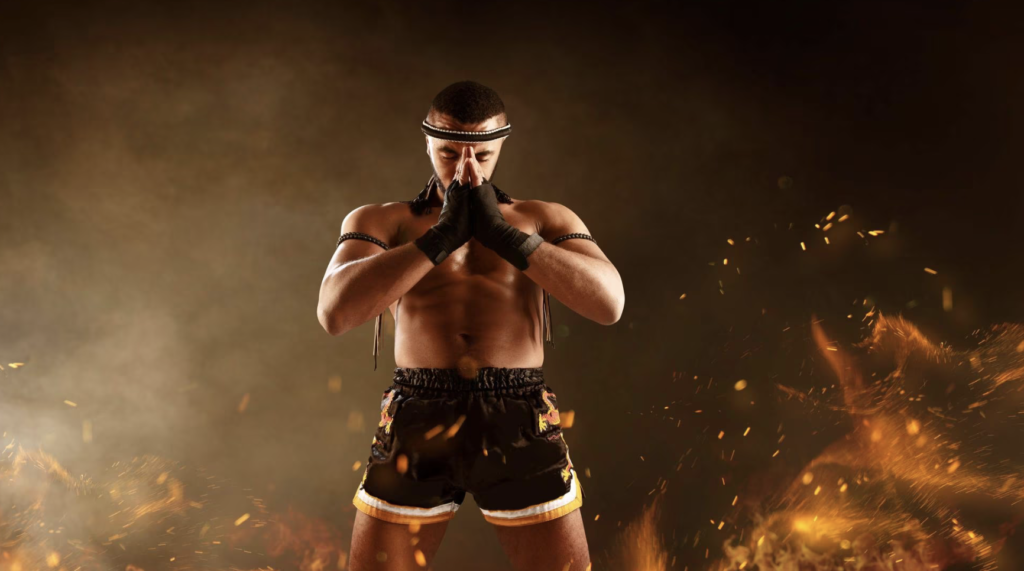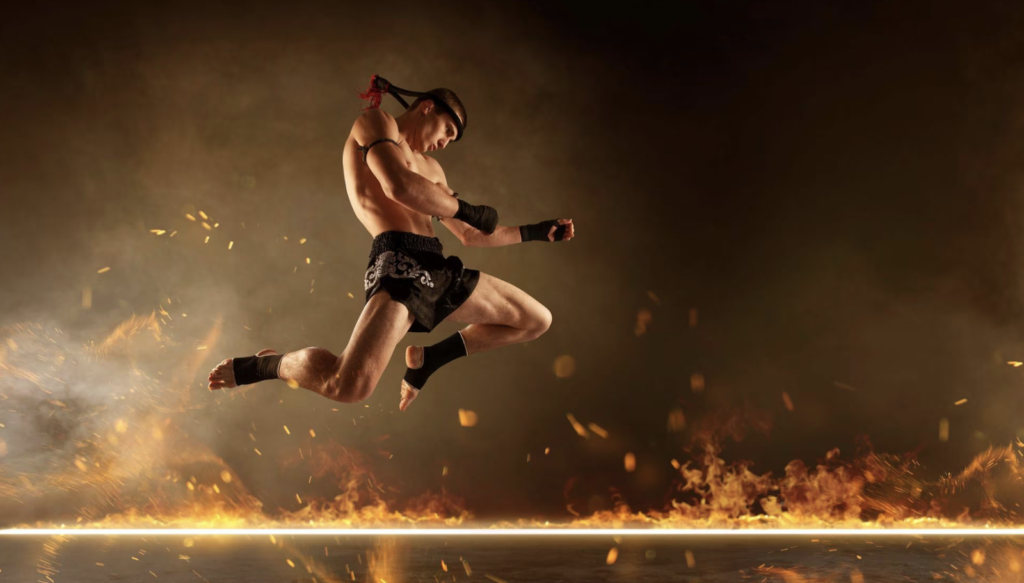Muay Thai, known as the “Art of Eight Limbs,” is a striking martial art originating from Thailand. Its unique blend of punches, kicks, elbows, and knee strikes demands precision and power from practitioners. With its physical intensity and dynamic techniques, it’s natural for enthusiasts and newcomers to wonder about the safety of engaging in Muay Thai. In this comprehensive article, we’ll dive deep into the realm of Muay Thai, exploring its potential dangers, safety precautions, and the array of physical and mental benefits that can be gained from participating in this sport.
The Dynamics of Muay Thai
Muay Thai’s dynamic techniques require practitioners to utilize various parts of their bodies for both offensive and defensive maneuvers. Fighters undergo rigorous training to enhance their strength, speed, agility, and endurance. While the sport is tightly regulated within a controlled environment, the physically demanding nature of Muay Thai can’t be overlooked. Like any contact sport, it carries inherent risks. However, these risks can be effectively managed through proper training and adherence to safety protocols.
Navigating the Risks:
- Physical Injuries: The intense nature of Muay Thai exposes participants to potential injuries, including bruises, cuts, sprains, and fractures. High-impact strikes and powerful kicks can lead to acute injuries, particularly without the use of proper protective gear;
- Overtraining Hazards: The demanding training regimen and repetitive movements can result in overuse injuries if not managed carefully. Muscles, tendons, and joints are susceptible to strain due to continuous training without sufficient rest;
- Head Trauma Concerns: While headgear is commonly used during sparring sessions, the risk of head trauma remains. Forceful strikes to the head can lead to head injuries, including concussions, necessitating vigilant precautionary measures;
- Strains and Sprains: The rapid and forceful movements in Muay Thai can cause muscle strains and ligament sprains, particularly when the body is not adequately warmed up.
Prioritizing Safety:
- Professional Training: Learning Muay Thai from certified instructors is paramount. Correct techniques, body mechanics, and defensive strategies should be emphasized from the outset;
- Effective Warm-up and Stretching: A comprehensive warm-up and stretching routine before training sessions can mitigate the risk of strains and sprains;
- Appropriate Protective Gear: Wearing the right protective gear, such as gloves, shin guards, mouthguards, and headgear during training and sparring, significantly reduces the risk of injuries;
- Guidance and Supervision: Training under the watchful eye of experienced coaches ensures proper execution of techniques and adherence to safety guidelines.
The Merits of Muay Thai

Despite the potential risks, Muay Thai offers numerous rewards that draw enthusiasts worldwide:
- Physical Fitness: Muay Thai training enhances cardiovascular health, strength, endurance, and flexibility;
- Self-Defense Proficiency: Learning striking and defensive techniques equips practitioners with invaluable self-defense skills;
- Mental Resilience: The discipline inherent in Muay Thai fosters mental strength, determination, and unwavering focus;
- Enhanced Confidence: With skill improvement, practitioners gain self-assuredness and a profound sense of accomplishment.
Common Injuries in Muay Thai: Navigating the Physical Toll

Engaging in the world of Muay Thai, a combat sport that demands a blend of precision, agility, and sheer power, exposes practitioners to both the thrill of mastering techniques and the reality of potential injuries. As enthusiasts embrace the art’s physical demands, they also need to be aware of the risks involved and adopt strategies to safeguard their well-being. In this in-depth section, we’ll delve into the intricacies of common injuries that are often encountered in the realm of Muay Thai and explore actionable steps to minimize their impact.
- Contusions and Hematomas: Contusions, those familiar yet uncomfortable bruises, are almost inevitable in a sport where strikes using various body parts are pivotal. For instance, an incorrectly executed elbow strike can result in a hematoma on the elbow or forearm. Knees, crucial weapons in a fighter’s arsenal, can also lead to hematomas when not employed with precision. Regular conditioning of striking surfaces, such as the shins and elbows, can help minimize the severity of contusions and prevent hematomas from forming;
- Sprains and Strains: Muay Thai’s dynamic movements can sometimes push muscles and ligaments to their limits, leading to strains and sprains. A roundhouse kick gone awry or an aggressive clinch can strain the quadriceps or hamstrings. Ankle sprains, often caused by quick pivots and directional changes, are also a common occurrence. Employing dynamic stretching before training and ensuring proper form during exercises can alleviate the risk of strains and sprains;
- Shin Splints: Shin splints, a discomforting pain along the shinbone, can afflict even the most dedicated Muay Thai practitioners. Repetitive shin-on-shin contact during sparring and shin-on-bag impacts can lead to this condition. To prevent shin splints, fighters often engage in shadowboxing and practice striking techniques against soft surfaces to gradually condition their shins;
- Fractures and Dislocations: While relatively uncommon, high-impact strikes and aggressive defense can lead to fractures and dislocations. An example is a fighter who attempts a powerful roundhouse kick and ends up with a broken foot due to improper alignment or striking an elbow. Dislocated fingers can also result from improper hand placement during clinching or striking. Immediate medical attention and a thorough rehabilitation plan are crucial for healing fractures and dislocations;
- Head and Facial Injuries: Despite protective headgear, head and facial injuries can occur during intense sparring sessions or competitive bouts. Accidental head clashes can lead to cuts and abrasions on the forehead, eyebrows, or cheeks. While these injuries are generally minor, they highlight the importance of practicing proper distancing and utilizing head movement techniques to avoid direct hits;
- Overuse Injuries: The intense training regimen in Muay Thai can contribute to overuse injuries, affecting tendons, muscles, and joints. A fighter who engages in excessive bag work without proper technique may develop tennis elbow, a form of tendinitis. Similarly, repetitive movements during clinching and striking can result in bursitis. To prevent overuse injuries, fighters incorporate active rest days, cross-training, and targeted mobility exercises into their routines;
- Joint Issues: Muay Thai’s demanding maneuvers can place stress on various joints, particularly the shoulders, elbows, and knees. A common example is a fighter who frequently executes powerful elbow strikes, which can lead to chronic shoulder strain. Regular strength and conditioning exercises for the shoulder muscles can offer stability and mitigate the risk of joint issues;
- Dehydration and Heat Exhaustion: Beyond the physical toll, Muay Thai’s intensity also raises concerns about dehydration and heat exhaustion, especially during extended training sessions in warm environments. Fighters often illustrate this with examples of feeling lightheaded and fatigued after rigorous training. Ensuring proper hydration, consuming electrolyte-rich fluids, and managing training intensity during hot weather are fundamental preventive measures;
- Back Injuries: The sport’s emphasis on explosive movements and powerful kicks can sometimes lead to lower back strains. An example is a fighter who neglects core strengthening exercises, resulting in back discomfort after a particularly vigorous training session. Incorporating core stability exercises and practicing correct posture while training can mitigate the risk of back injuries;
- Sprained Ankles: Quick pivots, footwork, and changing stances contribute to the possibility of ankle sprains. An example is a fighter who lands on an uneven surface while performing a rapid directional change. Wearing proper footwear, participating in balance drills, and being vigilant about foot placement can help prevent these common injuries.
In conclusion, while the world of Muay Thai offers profound benefits for physical and mental growth, it’s essential to acknowledge and manage the potential injuries associated with the sport. Developing an understanding of these injuries, incorporating preventative measures, and seeking expert guidance when necessary are crucial steps for ensuring a safe and gratifying Muay Thai journey.
Is Muay Thai More Traumatic Compared to Other Martial Arts? Debunking the Myths

The question of whether Muay Thai is more traumatic compared to other martial arts is a topic that often sparks debates among enthusiasts and practitioners. While Muay Thai is known for its intense and physically demanding nature, labeling it as inherently more traumatic requires a comprehensive examination of various factors. In this section, we’ll delve into the nuances of Muay Thai’s impact on the body and contrast it with other martial arts to provide a well-rounded perspective on the matter.
Understanding the Physical Demands of Muay Thai
Muay Thai is often referred to as “The Art of Eight Limbs” due to its incorporation of punches, kicks, elbows, and knee strikes. This multi-faceted approach to combat naturally places a considerable amount of physical stress on the body. Fighters engage in rigorous training that involves extensive pad work, sparring, clinching, and conditioning exercises, all of which contribute to their overall performance.
The intensity of Muay Thai training is designed to simulate the demands of an actual fight, allowing practitioners to develop their skills and stamina. However, this intensity can also contribute to the perception that Muay Thai is more traumatic. Striking and clinching techniques, in particular, expose fighters to a higher risk of impact-related injuries.
Comparing Trauma Levels: Muay Thai vs. Other Martial Arts
When evaluating the trauma levels of Muay Thai compared to other martial arts, it’s essential to consider the distinctive characteristics of each discipline. Various martial arts prioritize different aspects of combat and have unique training methodologies. Let’s explore how Muay Thai stacks up against some other popular martial arts in terms of trauma:
- Boxing: Boxing places a significant emphasis on powerful punches and defensive techniques. While the risk of head injuries is notable due to repeated head blows, the focus on upper-body movements might result in fewer leg and lower-body injuries compared to Muay Thai. In contrast, Muay Thai’s inclusion of kicks and knee strikes exposes fighters to a wider range of potential injuries;
- Brazilian Jiu-Jitsu: Brazilian Jiu-Jitsu (BJJ) primarily focuses on ground-based grappling and submissions. While joint locks and chokes are central to BJJ techniques, the art’s emphasis on controlled movements and technique application can result in fewer traumatic injuries than the high-impact strikes of Muay Thai. However, joint-related injuries are still a concern in BJJ;
- Karate: Karate emphasizes powerful strikes and blocks, with practitioners aiming to execute precise techniques. While there is a risk of traumatic injuries from strikes, the controlled nature of training and emphasis on proper form can contribute to a lower incidence of certain injuries compared to Muay Thai;
- Wrestling: Wrestling involves intense physical contact, throws, takedowns, and ground control techniques. While wrestlers are exposed to the risk of impact-related injuries, the emphasis on technique and control may lead to fewer traumatic injuries overall when compared to Muay Thai.
In the realm of martial arts, the question of whether Muay Thai is more traumatic than other disciplines doesn’t have a definitive answer. Each martial art presents its own set of challenges and potential injuries, which can vary depending on training intensity, protective gear, and individual practitioner skill levels. Muay Thai’s reputation for intensity should not overshadow the fact that its training methodologies also prioritize proper technique, conditioning, and safety.
Ultimately, the perception of whether Muay Thai is more traumatic compared to other martial arts can vary from person to person. While the sport demands dedication and resilience, it’s essential to approach training with proper guidance, awareness of one’s physical limits, and a focus on injury prevention. By practicing responsible training techniques and incorporating proper safety measures, practitioners can enjoy the benefits of Muay Thai without compromising their long-term well-being.
Safeguarding Your Well-Being: Effective Strategies to Prevent Injuries in Muay Thai

Muay Thai is a captivating martial art that demands discipline, dedication, and rigorous training. While it offers numerous physical and mental benefits, the dynamic nature of the sport also carries a potential risk of injuries. However, with the right approach, preventive measures, and mindful training, you can significantly reduce the likelihood of injuries. In this section, we’ll explore actionable strategies that can help safeguard your well-being and enhance your longevity as a Muay Thai practitioner.
- Warm-Up and Cool-Down: Prior to engaging in any training session, devote sufficient time to warm up your muscles and joints. Dynamic stretches, light cardio, and mobility exercises help prepare your body for the intense movements ahead. Similarly, concluding your session with a proper cool-down routine aids in reducing muscle soreness and prevents stiffness;
- Proper Technique Mastery: One of the most effective ways to prevent injuries is by ensuring you have a solid grasp of proper technique. Focus on mastering the fundamentals before progressing to more advanced moves. Incorrect technique not only hampers your progress but also increases the risk of strains, sprains, and more severe injuries;
- Gradual Progression: Avoid the temptation to rush through your training journey. Gradual progression is key to preventing overuse injuries. Introduce new techniques and intensities gradually, allowing your body to adapt and strengthen over time;
- Listen to Your Body: Pay close attention to your body’s signals. If you’re feeling fatigued, experiencing pain, or noticing discomfort, it’s crucial to acknowledge these signs and give your body the necessary rest it requires. Ignoring these signals can lead to injuries that could have been avoided;
- Quality Gear and Equipment: Invest in high-quality gear and equipment that provide the necessary protection. Well-fitted gloves, shin guards, mouthguards, and headgear play a vital role in minimizing the risk of impact-related injuries;
- Proper Conditioning: Regular physical conditioning is paramount in injury prevention. Incorporate strength training, flexibility exercises, and cardiovascular workouts into your routine to enhance your body’s resilience and overall fitness;
- Cross-Training: Engaging in cross-training activities that complement Muay Thai can help balance your physical development and reduce the risk of overuse injuries. Activities like yoga, swimming, or Pilates can improve flexibility, core strength, and overall body awareness;
- Adequate Recovery: Rest and recovery are integral components of injury prevention. Ensure you’re getting adequate sleep, staying hydrated, and nourishing your body with a balanced diet to facilitate muscle repair and overall well-being;
- Proper Supervision: Training under the guidance of experienced coaches and trainers is invaluable. Their expertise ensures you’re practicing correct techniques, employing appropriate training methods, and receiving guidance to prevent potential injuries;
- Injury Management and Rehabilitation: Despite your best efforts, injuries can still occur. Promptly address any injuries by seeking professional medical advice. Following a proper rehabilitation program under the supervision of medical experts can expedite recovery and reduce the risk of reinjury.
While Muay Thai is a demanding martial art, it can be practiced safely with the right approach. By incorporating these injury prevention strategies into your training regimen, you’re taking proactive steps to safeguard your well-being. Remember that consistent and mindful training, combined with proper technique, adequate rest, and expert guidance, can lead to a rewarding Muay Thai journey free from unnecessary injuries.
Conclusion
Is Muay Thai dangerous? As with any physically demanding pursuit, inherent risks are present. Nevertheless, with meticulous training, safety measures, and conscientious coaching, these risks can be minimized. The rewards of Muay Thai, including physical well-being, self-defense skills, and mental fortitude, often outweigh the risks for dedicated practitioners. Informed decisions and safety prioritization are pivotal for a positive and rewarding experience in the realm of Muay Thai.